Before You Begin Practicing
CLICK HERE TO VIEW THE FULL ARTICLE
Pager, ID badge, patient list and the coffee thermos – these are the usual things I see my wife take to work.
You see, I have the privilege of experiencing first-hand the glamorous lifestyle lived by junior members of the medical profession, as I’m married to a doctor. As such, I’ve been allowed to peek behind the curtain and to experience the trials and tribulations endured by those of you starting out in your medical careers.
I have experienced the agony of the Canadian Resident Matching Service (CaRMS), albeit second-hand, and I know all about the excruciating experience known as “Match Day.”
For those of you starting a fellowship in Alberta, the emotions experienced during the CaRMS process is now a thing of the past – you’ve made it! For those that have just started your residency in Alberta, there is comfort in knowing that you won’t need to deal with CaRMS again for several years.
PaperworkNow that you’ve arrived at this stage in your career, you should start to think about the future and, more specifically, what you want to do with your medical career.
You devoted enormous amounts of time to perfecting your craft. You studied hard and endured all those weekends and nights doing on-calls throughout your residency. Now is the time to ask that very important question: Where do I go from here?
As you progress up the medical ladder, your earning potential increases. Arguably the single most important question that a doctor must decide is whether to continue working for Alberta Health Services or to open one’s own practice. This article briefly describes the forms of business organizations commonly used by doctors in private practice. If you have ever considered working for yourself, then read on.
Firstly, there is no universal one-size-fits-all business model as each individual’s circumstances are different. In addition, there are benefits and constraints in each business organization. As your business matures and your circumstances change, it is important to re-assess whether your current business organization is still the best fit for you.
It is quite common for professionals to transform their business organization as the practice evolves and matures. Legal and financial advisors can assist in determining for you the most suitable model. The majority of doctors buy into a practice, and as such, the type of business organization is already dictated by the current owners.
But regardless of whether you start out on your own or buy into an existing practice, it is good to know the basics.
Sole practitioner: This is the purest and most straightforward business organization.
As a sole practitioner you and you alone control the destiny of your business. This means that all contracts are entered into in your name and that you are personally liable for debts incurred by the business. In a nutshell, you are the business and the buck stops with you.
The main benefit of carrying on business as a sole practitioner is that the start-up costs are minimal. Since you are the business, you pay the usual personal tax rate, so your losses from any given year can be carried forwarded to subsequent years.
The disadvantage of this model is that you are personally liable for all debts incurred by the business, and in addition, you might be paying too much tax under the current personal tax rate depending on how much you earn from your practice.
Partnership and limited liability partnership
There are essentially two types of partnerships:
- Ordinary partnership
- Limited liability partnership (LLP)
As the name suggests, a partnership is “the relationship that subsists between persons carrying on a business in common with a view to profit.”
In Alberta, the Partnership Act sets out the legal framework for this business organization. The term “joint and several liability” is the defining feature of this business vehicle.
Essentially, this arrangement is akin to a marriage, whereby you are bound by the acts or omissions of your partner(s). Just like a marriage, it is important that you know and trust your partner(s) because each and every partner has the power and authority to bind the other partners.
Partnerships are governed by arrangements made between the individuals, therefore the terms and conditions should be agreed to prior to entering into a partnership. Some basic questions which should be addressed are:
How to share the profit and loss of the business.
How to resolve disagreements between the partners.
What happens when a partner leaves or dies.
It is always preferable for partners to resolve their issues without the involvement of the courts, therefore it is highly advisable for the parties to draft a partnership agreement so that the parties know exactly what will happen in case certain issues or disagreements arise.
In an ordinary partnership, each and every partner is liable for the acts of the other partners. Most professionals (doctor, lawyers, dentists), however, operate their business as an LLP because this provides a layer of protection. In an LLP, partners are not liable for the acts of their fellow partners unless they were involved in the negligent act themselves.
Besides this very important element, in all other ways an LLP functions the same as an ordinary partnership.
Professional Corporation (PC)
A corporation is a legal person under the law and therefore it can do such things as hold property, enter into contracts and hire employees.
Since corporations are a separate legal entity, the defining feature of this business organization is “limited liability.” I won’t say too much on this subject because corporations cannot practice medicine. However in Alberta, professionals are allowed to incorporate and practice as a PC.
There are stringent restrictions on what a PC can do. For instance, the PC’s activities are restricted to the practice of the profession of its member. Therefore if you choose to incorporate, your PC can only be involved in activities related to the practice of medicine. In addition, PCs do not offer limited liability.
Many professionals find it advantageous to incorporate and operate their business as a PC.
The three main benefits of a PC are
- Potential income splitting.
- Tax deferral.
- Lower overall taxes paid on the first $500,000.
However, there are disadvantages:
- Incorporation is costly and complex.
- Business losses cannot be flowed through to shareholders of the PC.
- PCs must abide by a burden of greater regulation and compliance matters
However, even with its disadvantages, many medical professionals choose to incorporate because PCs can provide the aforementioned potential tax savings and tax deferral benefits.
Final thoughts
There are two very important things to stress here.
- First, there is no one-size-fits-all business model.
- Second, as your practice evolves and the circumstances in your life change, you should consider whether your current business organization is still the best fit for you.
Prevention is always better and cheaper than being forced to deal with unwanted issues after the fact, so it is advisable that you obtain legal, financial and tax guidance before you branch out to start your own practice. However, if after reading this article you are still pondering whether to work for yourself, you’ll need to consider commercial leases and employment contracts.
Then the fun really begins.


